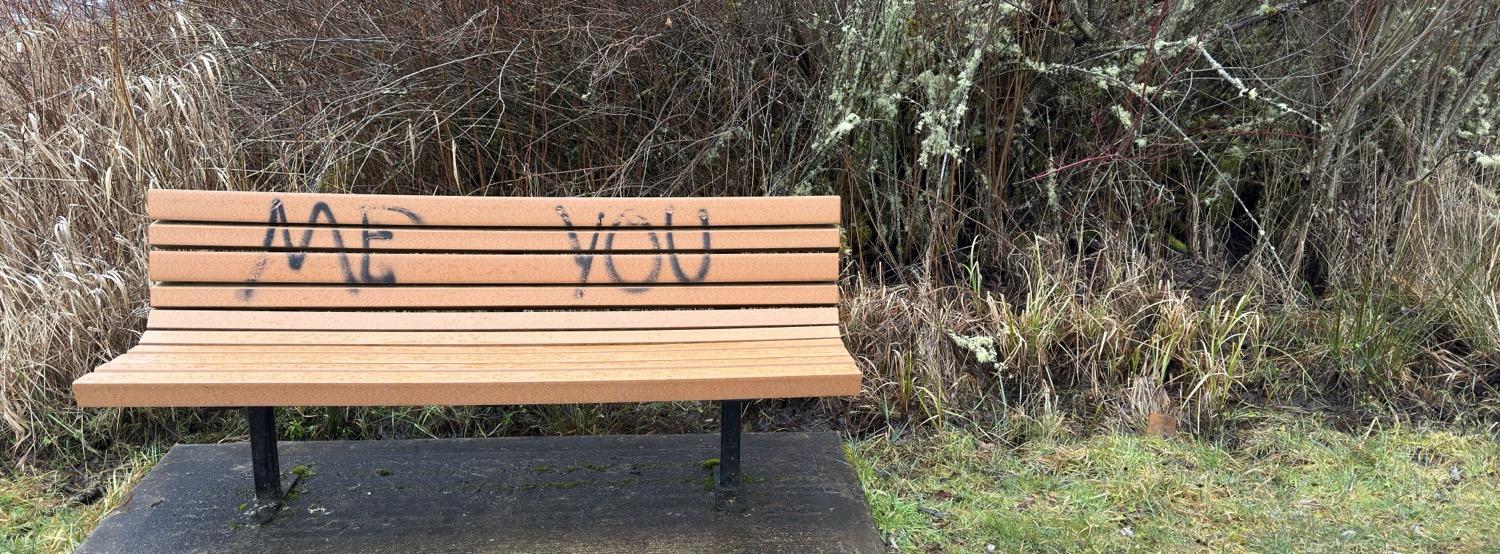- 🤬 Facebook is in one of its occasional moods where it decides that as a 51 year old white male, I should be served ads for guns, holsters, body armor, ultra-right-wing religious clothing, and erectile dysfunction pills. I hide ’em all, and they’ll cycle out eventually (at least, they always have in the past), but it’s always annoying when this happens. (No unsolicited advice about how to “fix” this, please. I’ve heard it all.)
-
🥶 So tired of the cold and snow. I do have to say, what I originally thought was just a silly joke a few weeks ago got us thinking, and y’know…hot water bottles come in really handy in weather like this! Thankfully, it looks like we’ll be warming up enough to get rain for the next week. I’ll take it!
-
🇺🇸 I’m not going to get too much into it, but I continue to be amazed at how quickly and thoroughly our government is being dismantled. As I grumbled elsewhere, if I’m going to be forced to live in a world with a megalomaniacal tech billionaire doing everything he can to tear down the world’s superpowers for his own benefit, can I at least get James Bond to swoop in and save the day, please?
📸 Photos


📚 Reading
Finished the last of this year’s Philip K. Dick Award nominated works, Adrian Tchaikovsky’s Alien Clay.
📺 Watching
Wrapped up season 16 of Drag Race (my favorite didn’t win, but I’m fine with the winner), and decided to take a slight break from Evil to get caught up with Law & Order and Law & Order: SVU. While season five of Scrubs still lands pretty solidly mostly in the “pleasantly distracting amusement” category, their homage to The Wizard of Oz is still a standout episode.
🎧 Listening
- A few weeks ago I picked up the Resurgence compilation from Spleen+, and it’s really strong. I’m a big fan of compilations, but they’re often very hit-and-miss; while that’s certainly true for this one as well, the ratio of hit to miss is really good here.
Embark on a sonic journey with “Resurgence”, the latest conceptual release from Brussels-based Spleen+ (a division of Alfa Matrix). This deluxe collector’s edition brings together 133 active bands from across the globe, spanning the diverse sub-genres born from post-punk’s iconic roots. Spread over an impressive 7-CD collection, this box set captures the essence of a movement that has influenced generations of music, art, and culture.
- Soft Cell will be touring through Seattle in May (along with Simple Minds and Modern English), and while that’s a really good and very tempting lineup, I decided to go to Underworld (also in May) instead. However, that did lead me to digging through Soft Cell’s website, where I found that they’d recently released a very nice six-disc box set reissue of Non-Stop Erotic Cabaret that I picked up. It arrived this week, and so for the past few days, that’s about all I’ve been listening to.
🔗 Linking
-
Marcin Wichary: The hardest working font in Manhattan
A lot of typography has roots in calligraphy – someone holding a brush in their hand and making natural but delicate movements that result in nuanced curves filled with thoughtful interchanges between thin and thick. Most of the fonts you ever saw follow those rules; even the most “mechanical” fonts have surprising humanistic touches if you inspect them close enough.
But not Gorton. Every stroke of Gorton is exactly the same thickness (typographers would call such fonts “monoline”). Every one of its endings is exactly the same rounded point. The italic is merely an oblique, slanted without any extra consideration, and while the condensed version has some changes compared to the regular width, those changes feel almost perfunctory.
Monoline fonts are not respected highly, because every type designer will tell you: This is not how you design a font.
- Ex Urbe: History’s Largest & Most Famous Disability Access Ramp
Time for the largest, most famous disability access ramp in the world, paired with a twist about how our feelings about a piece of history can reverse completely based, not just on the historian’s point of view, but what questions we start with.
- The Braille Institute has updated their excellent Atkinson Hyperlegible font to add two more versions.
-
Washington state Republicans have introduced a bill to get rid of voting by mail (bill info, current bill text (PDF)). This would have no substantive effect on safety or security, but would disenfranchise many voters and would make voting much more difficult for many more. Please voice your opposition to this bill and help protect voting by mail.
-
Seventeen states (and no surprises as to which: Alaska, Alabama, Arkansas, Florida, Georgia, Indiana, Iowa, Kansas, Louisiana, Missouri, Montana, Nebraska, South Carolina, South Dakota, Texas, Utah, and West Virginia) are suing to get rid of Section 504, which would remove all protections for disabled people. The link has more information on the case and pointers for how people in those states can contact their state Attorneys General to urge them to drop out of the case.
-
A few software things that I’d like to see if I can find time to play with at some point:
-
FreshRSS is a self-hosted RSS aggregator that can serve as a backend to NetNewsWire.
-
linkding is a self-hosted bookmark service like the old del.icio.us.
-
Both are supported by PikaPods, which looks to be a reasonably priced way to bridge the gap between where I am (I understand what the above software packages do and would like to use them) and what’s necessary to use them (self-hosting has moved on from LAMP setups and now tends to require Docker setups, which I vaguely understand but don’t know how to use and which aren’t supported by my Dreamhost account anyway).
-
And if I could get linkding up and running, I’d love to figure out how to hack into the old Postalicious WordPress plugin so that I could get it working with modern WordPress and linkding and finally satisfy my long-dormant urge to get my old linkblog posts up and running again. Realistically, I probably don’t have the PHP/programming knowledge/time to manage it, but a guy can dream, right?
-
